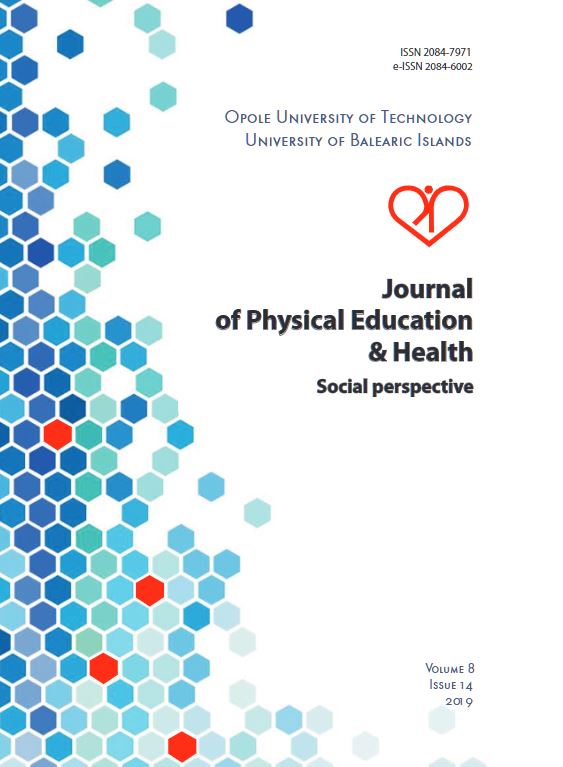Abstract
The aim of this study is to explore the effects of optimism and loneliness levels of the students at the Faculty of Sports Sciences.
For the purposes of data collection, two instruments were used: the ‘UCLA Scale’ which was developed by Russel et al [7] revised by Russel et al [8] and adapted into Turkish by Demir [9]; and the Optimism Scale which was developed by Balcı and Yılmaz [10] in order to explore students’ levels of loneliness and optimism. These questionnaires were administered to a total of 375 students consisting of 224 male and 151 female students.
For data analysis, the SPSS statistical packet program was used for frequency analysis, and independent t-tests, one-way ANOVA and Tukey test were run to find out the source of the difference among different groups of participants. In addition, correlation analysis was performed to reveal the relationship between the students’ Levels of Optimism and Loneliness.
Significant differences have been seen in the levels of optimism and loneliness among participants according to gender. (p<0,05)
According to this, averages of female students are higher than male students in levels of loneliness. In terms of levels of optimism, averages of male student are higher than female students.
References
Peplau L. A., Perlman D. Loneliness: A Sourcebook Of Current Theory. Research And Therapy. New York: Wiley, 1982.
Asher S. R., Parkhurst J. T., Wiliams G. A. Peer rejection and loneliness. Cambridge, UK: Cambridge University Press, 1998.
Seligman M. Öğrenilmiş İyimserlik. Ankara: H.Y.B Yayınları, 2007.
Jackson T., Weiss K. ve Soderlind A. Perception of goal-directe activities of optimists and pessimists: a personal projects analysis. The Journal of Psychology 2002; 136(5): 521–532.
Hart E. ve Hittner B. Optimism and pessimism associations to coping and anger reactivity. Personality and Individual Differences 1995; 6: 827–839.
Carver C. S., Scheier M. (2003). Optimism. In : Lopez S. J., Snyder C. R. (eds.) Positive psychological assessment: A handbook of models and measures. Washington, USA: American Psychological Association, 2003, pp. 75–89.
Russell D., Peplau L. A., Ferguson M. L. Developing a measure of loneliness. Journal of Personality Assessment 1978; 42: 290–294.
Russell D., Peplau L. A., ve Cutrona C. E. The revised UCLA Loneliness Scale: Concurrent and discriminant validity evidence. Journal of Personality and Social Psychology 1980; 39: 472–480.
Demır A., UCLA Yalnızlık Ölçeğinin Geçerlik ve Güvenirliği. Psikoloji Dergisi 1989; 23: 14–18.
Balcı S. ve Yılmaz M. İyimserlik ölçeğinin geçerlilik ve güvenilirlik çalışması. Ondokuz Mayıs Üniversitesi Eğitim Bilimleri Fakültesi Dergisi 2002; (14): 54–60.
Parmaksız İ. Öğretmen adaylarının benlik saygısı düzeylerine göre iyimserlik ve stresle başa çıkma tutumlarının incelenmesi. Master's thesis, Konya, Turkey : Selçuk University, 2011.
Eryılmaz A. Investigating of psychometric properties the scale of setting life goals with respect to positive psychotherapy on university students. Journal of Clinical Psychiatry (Klinik Psikiyatri Dergisi) 2012 ; 15 : 166–174.
Bostancı Ö., Oda B., Sebin K., Erail S. (2017). 11–13 yas öğrencilerin spor yapma durumlarına göre iyimserlik ile saldırganlık düzeylerinin incelenmesi. Beden Eğitimi ve Spor Bilimleri Dergisi 2017; 19(4): 205–217.
AkbağM.,ImamogluS.E.Thepredictionofgenderandattachmentstylesonshame,guilt,and loneliness. Educational Sciences: Theory and Practice 2010; 10(2): 669–682.
Erözkan A. The predictors of depression in eighth grade primary school students. Elementary Education Online 2009; 8(2): 334–345.
ErözkanA.Thepredictorsoflonelinessinadolescents.ElementaryEducationOnline2009;8(3): 809–819.

This work is licensed under a Creative Commons Attribution-ShareAlike 4.0 International License.
Copyright (c) 2019 Array

